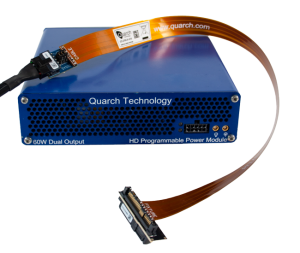The benefits
- Alignment with the PAM product range for better long-term support
Upgrading the core code of the product allows us to maintain it better and share new features and fixes between the HD and PAM range
-
Faster streaming (Recording at 4uS is now possible for several minutes)
The new block-based streaming is more advanced, flexible, and faster, so you can capture much more data than was possible before. A simple update to the latest version of Quarchpy and/or Quarch Power Studio will be all you need to to get it working -
Better accuracy at low power levels
HD modules worked with unsigned current values, and the product spec for current was from 100uA and up. At very low currents, some drives have an inductive profile, and brief negative current spikes are seen.The HD Plus firmware would not account for these, resulting in a higher power measurement. The new HD Plus firmware uses signed values all the way through the processing, so we can improve our accuracy spec.
-
Additional triggers now exist, including more trigger-out options.
Things to be aware of
No upgrade as major as this is perfect; there are a small number of points to be aware of:
-
 Customers who wrote their own packet decode for HD (‘very’ few) will have to extend it. Or move to using QIS if they want to benefit from the upgrade
Customers who wrote their own packet decode for HD (‘very’ few) will have to extend it. Or move to using QIS if they want to benefit from the upgrade -
Testmonkey (our older windows only app) does not support HD Plus. As Testmonkey it does not support many features of even the original HD, we do not think this will be a major issue. Quarch Power Studio can do everything Testmonkey did, and vastly more. Please consider Testmonkey as obsolete for power testing going forwards.
-
Power trigger thresholds are not available in HD Plus, though both current and voltage triggers are. The resolution of the triggers has also slightly changed due to the move to the PAM architecture. This is unlikely to affect many customers
-
The response of measure commands now match the PAM format. They have a space between the number and the unit
PPM = “692mV“ PPM Plus = “692 mV“
This makes parsing more consistent. It can be handled in custom scripts very easily. -
The response of measure command can now have a wider range of units. A command that always responded in ‘mA’ before may now be in ‘uA’, again custom scripts can check for this easily if not already done.





